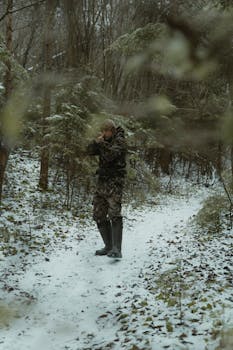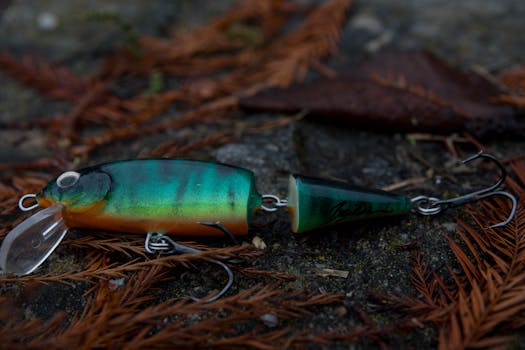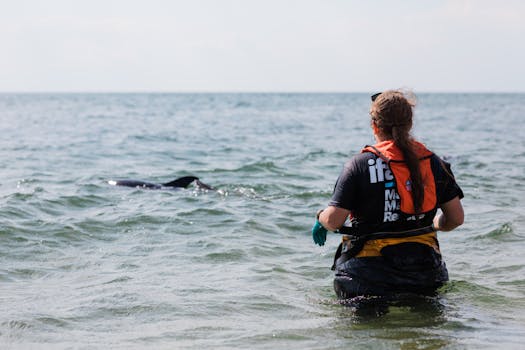Understanding hunting marketing is essential for businesses in the outdoor and sporting goods industries. As more people embrace outdoor activities, effective marketing strategies become crucial for targeting hunting enthusiasts.
By learning about hunting marketing, brands can engage with their audience better, leading to increased sales and brand loyalty. This article explores various aspects of hunting marketing that can empower businesses.
From defining target demographics to exploring innovative marketing techniques, understanding hunting marketing is a multi-faceted endeavor. Let’s dive deeper into the critical components of effective hunting marketing strategies.
Defining the Hunting Demographic
The hunting demographic includes diverse groups who participate in hunting, such as seasoned hunters, beginner hunters, and families. Understanding these segments aids in targeting your marketing efforts effectively.
Age and gender play pivotal roles in shaping hunting demographics. Younger audiences are increasingly joining the hunting community, shifting marketing strategies to appeal to more tech-savvy consumers.
Income levels also influence purchasing decisions. Higher disposable incomes often lead to premium product purchases, compelling marketers to highlight value and quality in their offerings.
Besides economic factors, lifestyle choices impact hunting habits. Outdoor enthusiasts often prefer brands that align with their values, opening opportunities for eco-friendly or sustainable marketing angles.
Moreover, geographic location matters significantly in hunting marketing. Regions with more access to natural reserves yield higher hunting populations, enabling targeted local marketing campaigns.
Key Marketing Strategies for Hunting Brands
With a defined demographic, successful hunting marketing hinges on employing specific strategies. Brands must utilize both traditional and digital marketing tactics to reach enthusiasts effectively.
Content marketing is a powerful tool, enabling brands to showcase their expertise. Blog posts, how-to guides, and videos can educate consumers and help build trust within the community.
Social media platforms also offer unique opportunities for engagement. Brands can connect with potential customers through visually appealing posts and authentic storytelling about hunting experiences.
Moreover, influencer marketing has gained popularity within the hunting community. Collaborating with respected figures can introduce brands to a wider audience, enhancing credibility and trust.
Finally, hosting events and sponsorships can strengthen brand awareness. Participating in hunting expos or contributing to local hunting competitions can solidify a brand’s presence in the industry.
The Role of Digital Marketing in Hunting
Digital marketing has transformed the hunting industry significantly. Brands can now connect with audiences on a deeper level through personalized communication and targeted advertising.
Search engine optimization (SEO) plays a crucial role in driving organic traffic. Brands must optimize their websites and content, ensuring they rank highly on search engine results for relevant keywords.
Pay-per-click (PPC) advertising offers immediate visibility online. When done right, it can be a cost-effective strategy for reaching targeted audiences actively seeking hunting products.
Email marketing also remains an effective strategy for nurturing leads. By building a subscriber list, brands can deliver tailored content and product promotions directly to interested customers.
Moreover, utilizing analytics tools is essential for measuring performance. Brands can assess which strategies yield the best results, allowing for data-driven decision-making and continual improvement.
The Power of Storytelling in Hunting Marketing
Storytelling is a potent marketing technique that resonates with hunters. By crafting narratives around experiences and adventures, brands can foster emotional connections with their audience.
Personal stories can also highlight the heritage and tradition associated with hunting. This not only attracts interest but encourages people to become part of that legacy.
Additionally, storytelling can enhance product presentation. Instead of merely listing features, brands can demonstrate how products enhance the hunting experience, making them more appealing to potential buyers.
Visual storytelling, through high-quality imagery and videos, captures attention effectively. Showcasing real hunting scenarios makes marketing content relatable and engaging, promoting higher conversion rates.
Ultimately, well-told stories create community. Hunters are likely to share experiences with others, amplifying brand reach through word-of-mouth that traditional advertising struggles to achieve.
Building a Community Around Your Brand
Creating a sense of community is fundamental for hunting brands. It fosters brand loyalty, encouraging repeat purchases and helping to establish a lasting relationship with consumers.
Brands can leverage forums and social media groups to engage with hunters. Creating dedicated spaces for discussions builds trust and positions brands as authorities within the industry.
Collaborative events, such as outdoor workshops or hunting trips, offer excellent opportunities. These events not only promote products but also facilitate meaningful interactions between brands and their customers.
Online contests and challenges can also drive engagement. Inviting hunters to share their stories or photos can create buzz, building excitement around the brand and encouraging participation.
Providing valuable resources, like gear reviews and expert tips, reinforces a sense of community. Brands that genuinely care about their customers’ experiences will stand out amid competition.
Effective Use of Influencer Partnerships
Influencer partnerships have emerged as an effective marketing tactic in the hunting community. Collaborating with industry leaders can significantly amplify reach and enhance credibility.
Finding the right influencers is crucial. Brands should aim for individuals whose values align with theirs, ensuring authentic promotion that resonates with their target audience.
Micro-influencers, those with smaller but engaged followings, can be particularly effective. They often boast highly engaged communities that trust their recommendations, yielding higher conversion rates.
Brands must provide influencers with creative freedom. Empowering influencers to craft their content around the products leads to more authentic promotions, fostering trust among their followers.
Regularly reviewing influencer performance will help maintain effective collaborations. Brands should assess engagement metrics to determine what strategies work best and optimize future partnerships accordingly.
Conclusion
Understanding hunting marketing encompasses a variety of strategies aimed at engaging outdoor enthusiasts. By defining demographics, employing digital tactics, and enhancing community connections, brands can thrive in the competitive hunting market.
Using storytelling and harnessing influencer partnerships plays a vital role in establishing lasting relationships with customers. At its core, successful hunting marketing is about recognizing and addressing the unique interests of this passionate community.
Ultimately, businesses that adapt to the evolving landscape of hunting marketing will stand out. By implementing these strategies, brands can drive growth and foster loyalty within this vibrant community.


